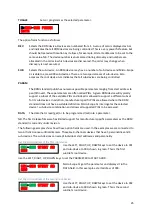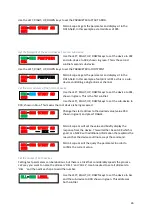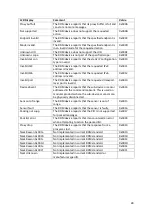
13
Parameter Description
Default
Value
Min
Max
Legal
Min
Legal
Max
number of bytes in addition to the
Start Code that are contained in the
DMX packet.
Break
The Break is the synchronization that
indicates the start of DMX packet.
200us
40us
20ms 92us*
2
1s*
3
MaB
The MaB or Mark after Break is the
idle period between the end of Break
and the Start Code.
20us
8us
20ms 12us*
4
1s*
3
ISD
The ISD is the inter-slot delay. This is
the idle time between the slots in the
DMX packet.
8us
0us
20ms 0us
1s*
3
MbB
The MbB or Mark before Break is the
idle period between the end of the
last data slot and the next packet’s
Break.
20us
0us
20ms 0us
1s*
3
*
1
This is a simplification that provides a good rule of thumb. In fact, any number of data slots below 24 can
be used, subject to Packet Time >=1204us.
*
2
In the earlier DMX512(1990) standard the minimum was 88us.
*
3
The 1s maximum is actually for the entire packet.
*
4
In the earlier DMX512(1990) standard the minimum was 8us.
When would I use this?
These parameters are used when testing a DMX receiver that is suspected to be incompatible. If a
receiver is suspected of being incapable of receiving fast DMX, set all the timing parameters to their
lowest value in order to produce very fast DMX.
If a DMX receiver is suspected of flickering on RDM (Remote Device Management), try setting the
Start Code to a non-zero value (204 is the RDM start code) and then use TRANSMIT-CHANNEL. The
receiver should not respond to the data.




























